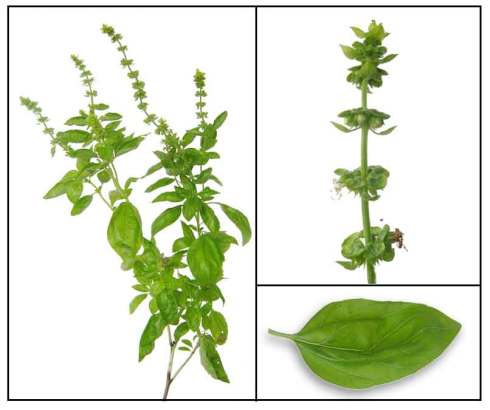Mulberry leaf powder contains full spectrium chemicals activities in pharmaceutical applications:
Ace-inhibitor activity:
(+)-catechin, (+)-gallocatechin, (-)-epicatechin, (-) epigallocatechin, afzelin, amentoflavone, astragalin, isoquercitrin, quercitrin, zinc.
Aldose-reductase-inhibitor activity:
(-)-epigallocatechin, 6-(pentadecyl)-salicylic-acid, acacetin, amentoflavone, ascorbic-acid, astragalin, daucosterol, isoquercitrin, kaempferol, luteolin, p-coumaric-acid, quercetin, quercitrin, rutin, vanillic-acid.
Antihiv activity:
(+)-catechin, (-)-epicatechin, amentoflavone, apigenin, luteolin, myricetin, opcs, procyanidin, quercetin, tannin.
Antiacne activity:
(-)-epigallocatechin, anacardic-acid, beta-carotene, linoleic-acid, pufa, selenium, thymol, zinc.
Antiaging activity:
apigenin, ascorbic-acid, beta-carotene, bilobalide, chromium,
quercetin.
Antialzheimeran activity:
choline, quercetin, thiamin, zinc.
Antianginal activity:
magnesium, niacin.
Antianxiety activity:
calcium, magnesium, tryptophan.
Antiarrhythmic activity:
apigenin, ginkgolide-b, magnesium, potassium, protocatechuic-acid, quercitrin.
Antiarteriosclerotic activity:
histidine, linoleic-acid, silicon.
Antiarthritic activity:
ascorbic-acid, copper, linoleic-acid, magnesium, pantothenic-acid, quercetin, thymol.
Antiasthmatic activity:
ascorbic-acid, beta-carotene, ginkgolide-a, ginkgolide-b, ginkgolide-c, ginkgolides, magnesium, opcs, protocatechuic-acid, quercetin,
Antiatherogenic activity:
luteolin, opcs, rutin.
Antiatherosclerotic activity:
ascorbic-acid, calcium, chromium, citric-acid, lutein, magnesium, malic-acid, proanthocyanidins, quercetin, rutin,
thymol.
Antibiotic activity:
cysteine, opcs, procyanidin, prodelphinidin.
Anticancer activity:
alpha-carotene, beta-carotene, butyric-acid, isoquercitrin, kaempferol, rutin, shikimic-acid, tannin, vanillic-acid.
Anticancer (lung) activity:
alpha-carotene, apigenin, beta-sitosterol.
Anticarcinogenic activity:
(-)-epigallocatechin, luteolin.
Anticarcinomic (breast) activity:
quercetin
Anticataract activity:
ascorbic-acid, cysteine, luteolin, methionine, quercetin, quercitrin, riboflavin, rutin, zinc.
Anticoagulant activity:
(+)-catechin, citric-acid, d-catechin.
Anticoronary activity:
beta-carotene, linoleic-acid, magnesium, selenium, zinc.
Antidepressant activity:
ascorbic-acid, calcium, magnesium, phenylalanine, potassium,
quercetin, tryptophan.
Antidiabetic activity:
(-)-epicatechin, ascorbic-acid, choline, chromium, copper, fiber, fructose, glucomannan, magnesium, manganese, pinitol, quercetin, rutin, xylose, zinc.
Antiedemic activity:
amentoflavone, ascorbic-acid, beta-sitosterol, ginkgetin, glucose, opcs, proanthocyanidins, procyanidin, quercitrin,
rutin, sciadopitysin.
Antiestrogenic activity:
apigenin, beta-sitosterol, luteolin, quercetin.
Antifatigue activity:
pantothenic-acid, potassium, thiamin, vanillic-acid.
Antiflu activity:
ergosterol, p-cymene, quercetin, quercitrin.
Antiglaucomic activity:
ascorbic-acid, magnesium, rutin.
Antihepatotoxic activity:
ascorbic-acid, glucose, p-coumaric-acid, protocatechuic-acid,
quercetin, quercitrin, rutin, stigmasterol, tannin.
Antiinflammatory activity:
(+)-catechin, (-)-epicatechin, alpha-linolenic-acid, amentoflavone, apigenin, ascorbic-acid, beta-sitosterol, copper, ginkgetin, ginkgolides, isoquercitrin, isorhamnetin,
kaempferol, linoleic-acid, luteolin, magnesium, mufa, myricetin, oleic-acid, opcs, protocatechuic-acid, quercetin,
quercetin-3-rhamnoglucoside, quercitrin, rutin, sciadopitysin,
stigmasterol, thymol, vanillic-acid.
Antileukemic activity:
(-)-epicatechin, amentoflavone, apigenin, astragalin, beta-sitosterol, daucosterol, kaempferol, luteolin, p-coumaric-acid, protocatechuic-acid, quercetin, selenium, vanillic-acid.
Antimelanomic activity:
apigenin, beta-ionone, luteolin, quercetin, rutin, selenium, thymol.
Antimigraine activity:
ascorbic-acid, magnesium, riboflavin, thiamin, tryptophan.
Antimutagenic activity:
(+)-catechin, (+)-gallocatechin, (-)-epicatechin, (-)-epigallocatechin, acacetin, apigenin, ascorbic-acid, beta-carotene, beta-eudesmol, beta-sitosterol, citric-acid, kaempferol, luteolin, myricetin, nonacosane, p-hydroxy-benzoic-acid, protocatechuic-acid, quercetin, quercitrin, rutin,
tannin.
Antiobesity activity:
ascorbic-acid, chromium, fiber, opcs, zinc.
Antioxidant activity:
(+)-catechin, (+)-gallocatechin, (-)-epicatechin, (-)-epigallocatechin, alanine, amentoflavone, apigenin, ascorbic-acid, beta-carotene, beta-sitosterol, bilobalide, bilobetin, campesterol, cysteine, gamma-tocopherol, ginkgetin, ginkgolide-a, ginkgolide-b, ginkgolide-c, ginkgolide-j, ginkgolides, histidine, isoquercitrin, isorhamnetin, kaempferol,
lauric-acid, lutein, luteolin, methionine, myricetin, myristic-acid, opcs, p-coumaric-acid, p-hydroxy-benzoic-acid, palmitic-acid, proanthocyanidins, protocatechuic-acid, quercetin, quercitrin, rutin, sciadopitysin, selenium, shikimic-acid,
stigmasterol, sucrose, tannin, thymol, tryptophan, vanillic-acid.
Antiparkinsonian activity:
ascorbic-acid, methionine, niacin, phenylalanine, tryptophan, tyrosine.
Antiprostaglandin activity:
(+)-catechin, anacardic-acid, beta-sitosterol, ginkgoic-acid,
ginkgolic-acid, tryptophan.
Antirheumatic activity:
thymol, tryptophan, zinc.
Antisickling activity:
3,4-dihydroxybenzoic-acid,asparagine, glycine, homoserine, p-hydroxy-benzoic-acid, phenylalanine, vanillic-acid.
Antispasmodic activity:
apigenin, daucosterol, ginkgetin, isorhamnetin, kaempferol, kaempferol-3-rhamnoglucoside, luteolin, niacin, p-coumaric-acid, potassium, protocatechuic-acid,quercetin, quercetin-3-rhamnoglucoside, quercitrin, rutin,shikimic-acid, thymol, valerianic-acid.
Antistress activity:
apigenin, beta-carotene, gamma-aminobutyric-acid.
Antistroke activity:
magnesium, proanthocyanidins.
Antithrombotic activity:
anacardic-acid, bilobol, cardanol, ginkgolides.
Antitumor activity:
anacardic-acid, apigenin, beta-carotene, beta-ionone, bilobol,
butyric-acid, citric-acid, cysteine, daucosterol, fiber, ginkgoic-acid, ginkgolic-acid, isoquercitrin, kaempferol, luteolin, malic-acid, p-coumaric-acid, proanthocyanidins, quercetin, quercitrin, rutin, selenium, shikimic-acid, tannin, vanillic-acid.
Antitumor (breast) activity:
apigenin, beta-carotene, beta-sitosterol, lutein, quercetin, selenium, zeaxanthin.
Antitumor (colon) activity:
beta-carotene, lutein, luteolin, protocatechuic-acid, quercetin.
Antitumor (lung) activity:
apigenin, ascorbic-acid, beta-carotene, beta-sitosterol, luteolin, quercetin, selenium.
Antitumor (skin) activity:
apigenin, luteolin, protocatechuic-acid, quercetin,
Antitumor (brain) activity:
luteolin, selenium.
Antitumor-promoter activity:
isoquercitrin, kaempferol, quercetin, rutin, shikimic-acid, tannin, vanillic-acid.
Antiulcer activity:
(+)-catechin, amentoflavone, ascorbic-acid, beta-carotene, beta-eudesmol cysteine, elemol, fiber, ginkgolide-b, glycine,
histidine, kaempferol, quercetin, quercitrin, rutin, tannin, threonine, tyrosine, zinc.
Antiviral activity:
(-)-epicatechin, amentoflavone, apigenin, ascorbic-acid, beta-sitosterol, bilobetin, ergosterol, ginkgetin, kaempferol, lauric-acid, luteolin, myricetin, nonacosane, opcs, p-cymene, proanthocyanidins, procyanidin, protocatechuic-acid, quercetin, quercitrin, rutin, stigmasterol, tannin.
Anxiolytic activity:
apigenin, gamma-aminobutyric-acid, glutamic-acid.
Cancer-preventive activity:
(+)-catechin, (-)-epicatechin, alanine, alpha-linolenic-acid, apigenin, ascorbic-acid, beta-carotene, beta-ionone, beta-sitosterol, cysteine, d-catechin, fiber, glycine, isoquercitrin, isorhamnetin, kaempferol, linoleic-acid, luteolin, methionine, mufa, myricetin, myristic-acid, niacin, oleic-acid, opcs, p-coumaric-acid, p-hydroxy-benzoic-acid, pantothenic-acid,
quercetin, quercitrin, riboflavin, rutin, selenium, serine, shikimic-acid, stigmasterol, succinic-acid, tannin, tyrosine, vanillic-acid.
Cardiotonic activity:
(+)-catechin, (-)-epicatechin, d-catechin, quercitrin.
Cosmetic activity:
behenic-acid, myristic-acid, stearic-acid.
Estrogenic activity:
apigenin, beta-sitosterol, kaempferol, luteolin, quercetin, stigmasterol.
Hepatoprotective activity:
(+)-catechin, acacetin, beta-eudesmol, beta-sitosterol, choline, isorhamnetin, kaempferol, linoleic-acid, luteolin, methionine, niacin, proanthocyanidins, quercetin, rutin, tannin, zeaxanthin.
Hypocholesterolemic activity:
(-)-epicatechin, ascorbic-acid, beta-ionone, beta-sitosterol, calcium, campesterol, chromium, copper, fiber, ginkgoic-acid, glucomannan, linoleic-acid, luteolin, magnesium, mufa, oleic-acid, rutin, stearic-acid, stigmasterol.
Hypotensive activity:
alpha-linolenic-acid, apigenin, ascorbic-acid, astragalin, calcium, choline, chromium, fiber, gamma-aminobutyric-acid,
isoquercitrin, kaempferol, magnesium, quercitrin, rutin, tryptophan, zinc.
Hypoglycemic activity:
(-)-epicatechin, ascorbic-acid, beta-sitosterol, chromium, daucosterol, manganese, myricetin, niacin, quercetin, quercitrin, tryptophan.
Immunostimulant activity:
(+)-catechin, (-)-epicatechin, alpha-linolenic-acid, ascorbic-acid,
astragali, beta-carotene, phosphoru, protocatechuic-acid, selenium, zinc.
Insulinogenic activity:
(-)-epicatechin, chromium, magnesium, quercetin, zinc.
Inotropic activity:
apigenin, kaempferol, quercetin.
Neuroprotective activity:
bilobalide, ginkgolide-a, ginkgolide-b, ginkgolides, kaempferol, quercetin.
Pituitary-stimulant activity:
arginine
Roborant activity:
aspartic-acid
Sunscreen activity:
apigenin, opcs, rutin.
Vasodilator activity:
(-)-epicatechin, alpha-linolenic-acid, apigenin, arginine, ascorbic-acid, calcium, fiber, ginkgetin, isorhamnetin, kaempferol, luteolin, magnesium, myricetin, niacin,potassium,
proanthocyanidins, quercetin, rutin.
Sedative activity:
apigenin, beta-eudesmol, gamma-aminobutyric-acid, niacin,
p-cymene, stigmasterol, thymol, tryptophan.
N.B. If you are the author of this article just feel free to write me so that I can quote you or make your website as reference.


